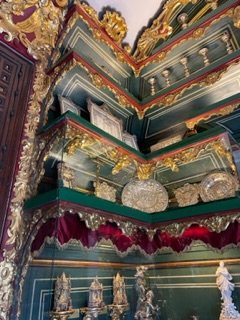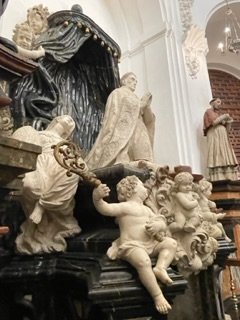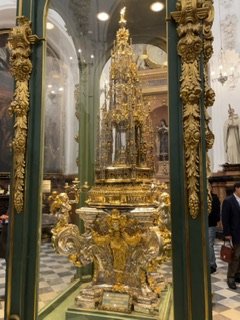This morning we visited the Jewish Quarter as well as the Cathedral of Cordoba.
The Jewish Quarter is where Jews lived between tht 10th and 15th centuries and is a maze of narrow alleys that wind through the streets. The area became a World Heritage Site in 1994.
The Jewish Quarter was surrounded by a wall which protected the Jews from attacks by the Christians. We visited the small synagogue with an Arabian style interior. At one point, the synagogue was used as a church and you can see a faint cross on one of the walls. There is a statue of Moshe Maimonides outside. He was a scholar of the Torah and was also an astronomer and a physician. He was born in 1138 and died in 1204.
We visited a lovely secluded patio, which was one of many that are tucked in throughout the area. In the month of May, The Festival de Patios takes place and for 12 days, residents open their private patios, which have been decorated with beautiful flowers that overflow from windows and spread along the stone walkways, so that tourists can enjoy the spectacle. Last year over 900,000 tourists came to see the displays.
From the Jewish Quarter we headed over to The Cathedral of Our Lady of the Assumption. Because of it’s former status as a mosque, it is also known as The Great Mosque of Cordoba.
Allan and I have visited many mosques and cathedrals all over the world, but we have never seen anything as magnificent as the Cathedral we visited today. It is a cathedral surrounded by a mosque.
The mosque was constructed in 785 and had been expanded over the centuries. In 1236 the mosque was converted to a cathedral. The former minaret of the mosque became the cathedral’s bell tower. Today, the Cathedral celebrates daily masses.
The mosque at the time was very important to the Islamic community and was the focus of the city. It has been said that “the beauty of the mosque was so dazzling that it defied any description.”
I would absolutely agree!
We entered the prayer hall that faces towards Mecca, and it was quite beautiful. It is called the Mihrab.
After 1236, the Christians added many additions to the mosque, including small chapels. The most substantial and visible additions are the nave and transept of the Capilla Mayor (the main chapel where Mass is held today) which were begun in the 16th century and inserted into the middle of the former mosque’s prayer hall.
The mahogany carvings where the choir sits, as well as the ornate altar, and the two pipe organs, were unbelievably beautiful. The upper row of carvings depicted scenes from the bible and encircled the area and the lower carvings depicted some of the saints.
I hope my photos will do justice to do cathedral as it was really beyond words.
After our tour we had lunch at a small restaurant and then boarded our bus for the ride to Sevilla. Dinner was a buffet and then Allan and I took a short walk around the neighborhood. It was a lovely warm evening.
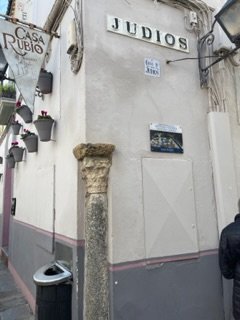
Jewish Quarter
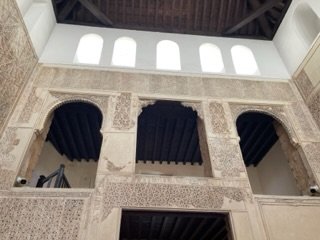
Synagogue
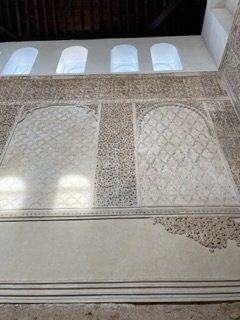
Synagogue

Patio
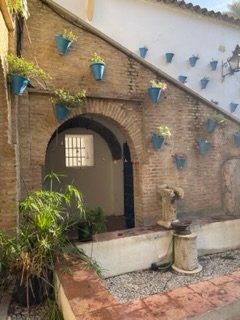
Patio
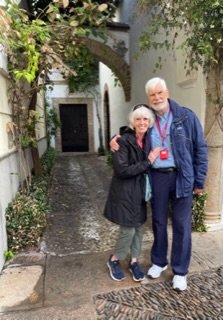

The Cathedral bell tower. You can still see the minarets.

Inside the Cathedral

The mosque section
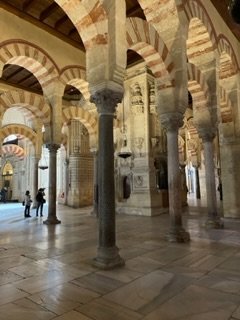
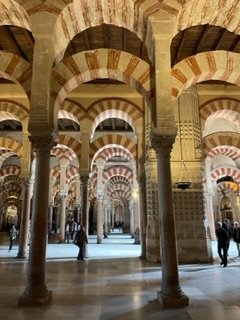
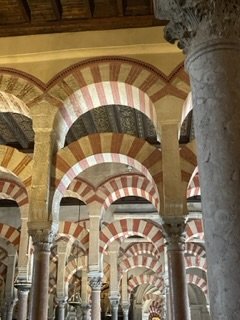

Small chapel. Gate from the mosque, column from Roman times, and Catholic chapel. Wouldn’t it be wonderful if all the religions could exist side by side.


The Mihrab – the prayer hall of the mosque facing Mecca
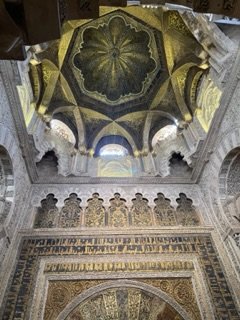
The ceiling of the prayer hall
Below are the photos of the Cathedral:
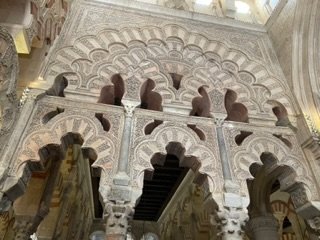

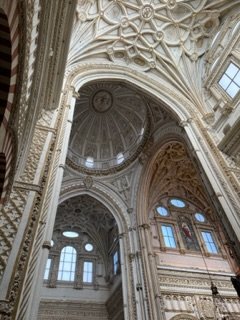


The choir area

One of the organs
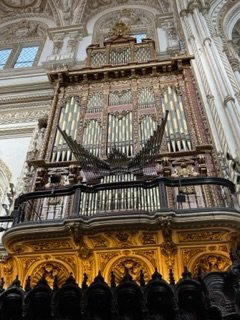
The other organ
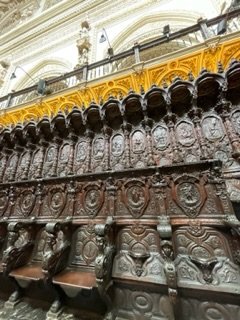
The mahogany carvings
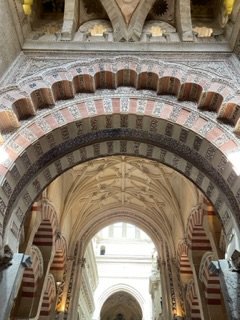
Mosque side of the archway

Christian side of the same archway
